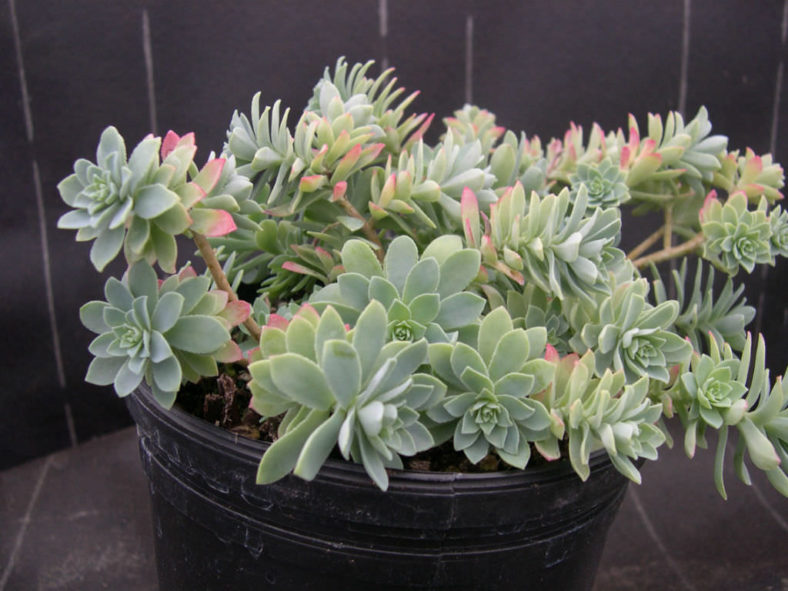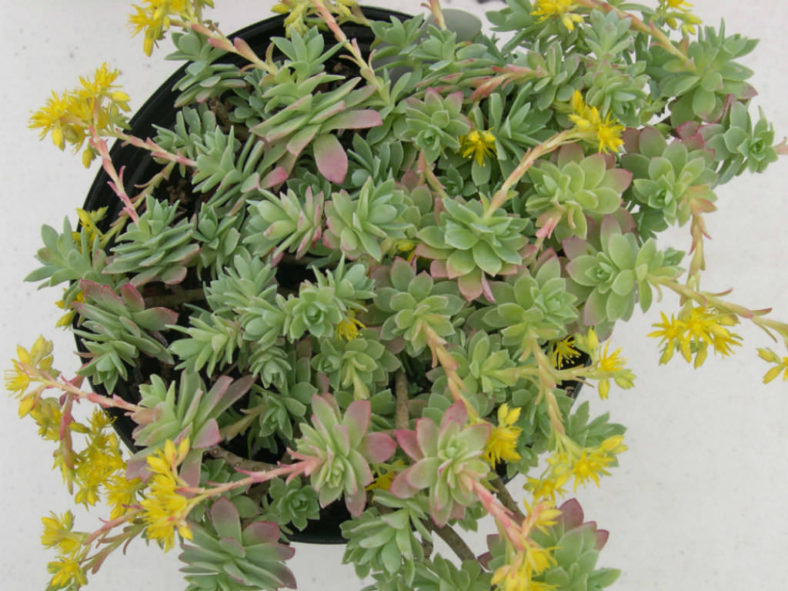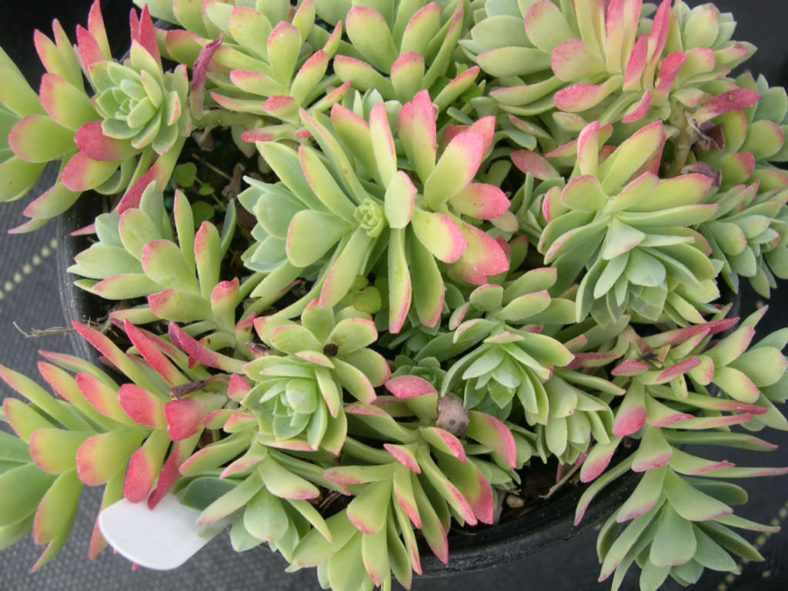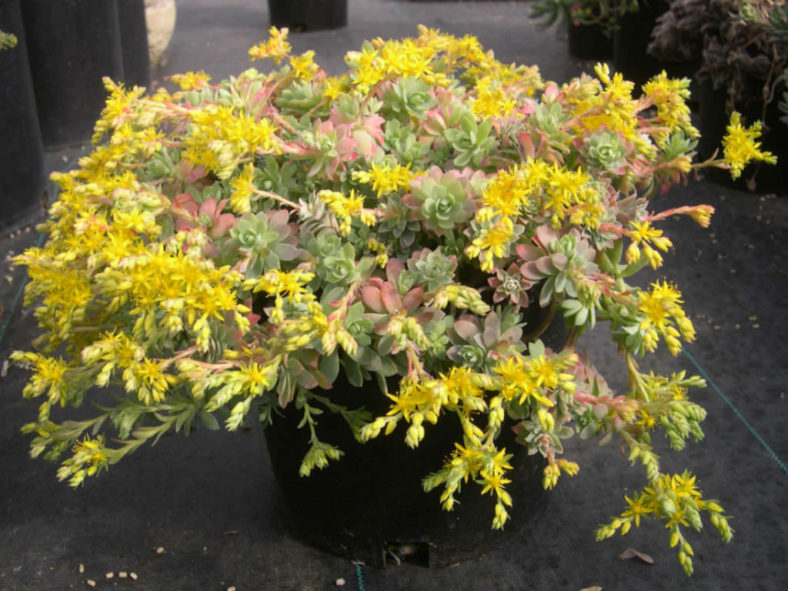Scientific Name
Sedum palmeri 'Guatemalan Mini'
Scientific Classification
Family: Crassulaceae
Subfamily: Sempervivoideae
Tribe: Sedeae
Genus: Sedum
Origin
Sedum palmeri 'Guatemalan Mini' was named and described by Ray Stephenson in the Sedum Society Newsletter 90 (2009). It is originally from Guatemala, but its exact origin remains a mystery. It was said to have been bought in a Guatemalan marketplace, hence the name, which is somewhat misleading as the plant has been found growing in Mexico.
Description
Sedum palmeri 'Guatemalan Mini' is a small succulent shrub with light green leaves with gently serrated margins. It is much smaller than the typical Sedum palmeri. The leaves are narrowly spatulate and can grow up to 0.8 inches (2 cm) long.
The inflorescences are abundant and bloom almost simultaneously with those of Sedum palmeri. The yellow flowers appear in spring and can reach up to 0.4 inches (1 cm) in diameter.

Hardiness
USDA hardiness zones 9a to 11b: from 20 °F (−6.7 °C) to 50 °F (+10 °C).
How to Grow and Care
Once established, Palmer's Sedum is an easy-care plant. Like all succulents, it demands porous soil and rapid drainage. It grows in rock gardens, mounds, small slopes, natural cliff faces, and at the top edge of retaining walls and curbs. This is a great plant for a soil pocket on a wall, as a container specimen, or in a hanging basket.
Palmer's Sedum is noted as one of the most shade-tolerant Sedums, but if grown in bright light, the green leaves blush with pink. Water during the growing season only if the soil dries out completely. It is hardy to 20 °F (-7 °C), and some say it can handle temperatures closer to 0°F (-17.8°C).
Irrigate more or repot when plants drop lower leaves. You can prune back any errant runners by breaking them off. You can also cut back in spring to keep the growth habit more compact.
Learn more at How to Grow and Care for Sedum.
Links
- Back to genus Sedum
- Succupedia: Browse succulents by Scientific Name, Common Name, Genus, Family, USDA Hardiness Zone, Origin, or cacti by Genus
Photo Gallery
Click on a photo to see a larger version.


